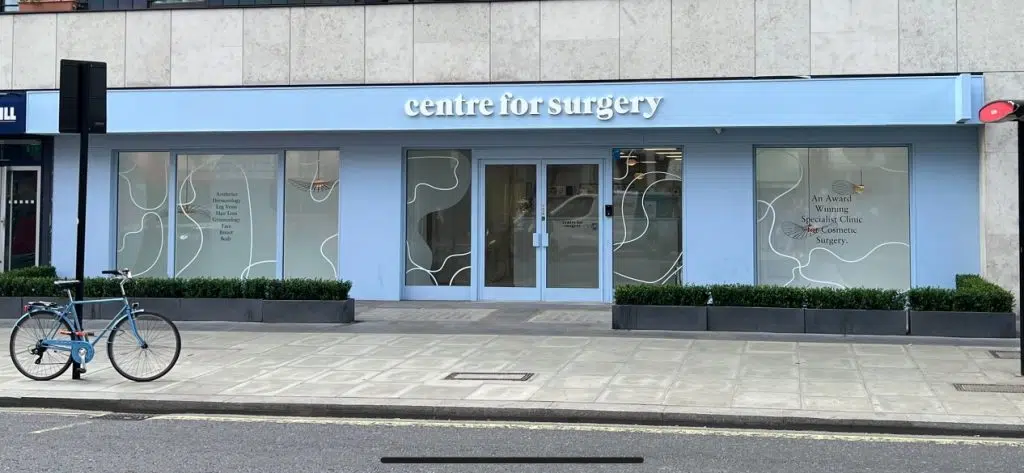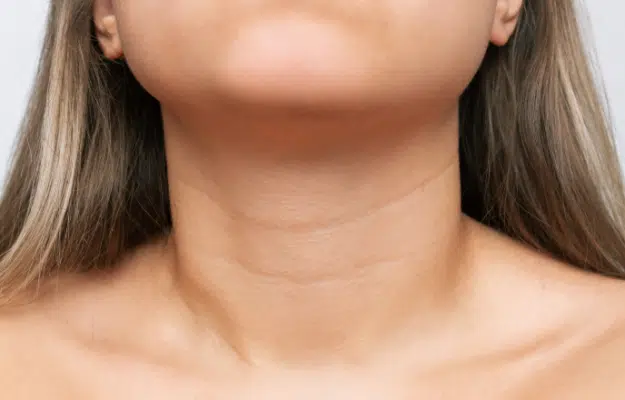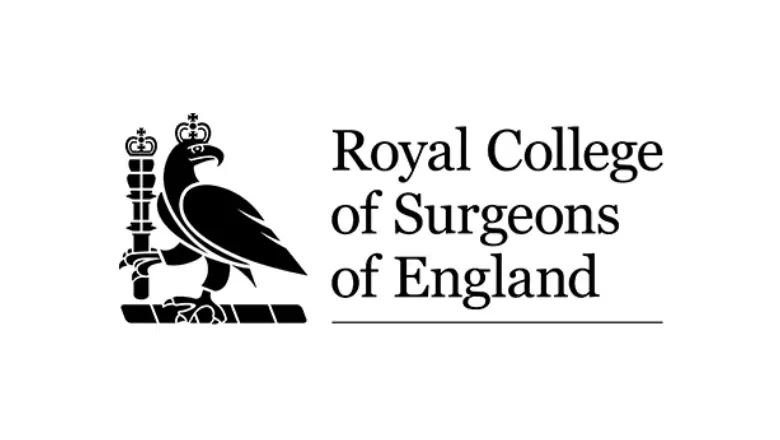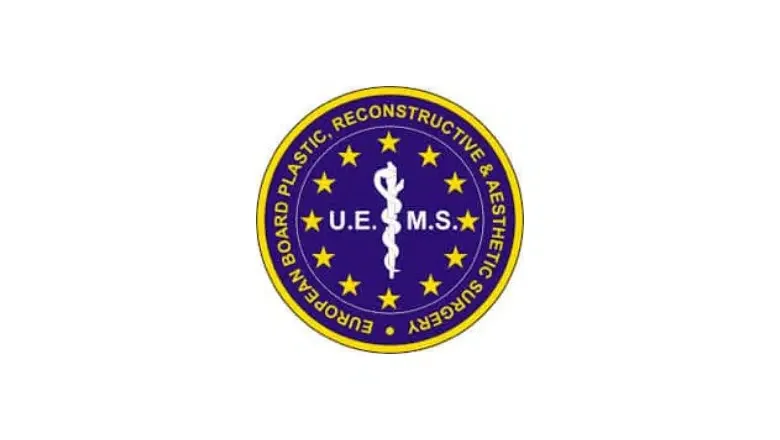FTM (Female-to-Male) top surgery involves various incision options that are dependent on factors like the patient’s skin elasticity, chest size, and personal goals. Each of these techniques has its unique advantages and potential drawbacks. Here are the most common FTM/N chest reconstruction incision types:
If you have a medium to large chest (cup size C and above) and significantly sagging skin, a double incision top surgery could be the ideal solution for you. This procedure helps reconstruct male chest contours and position the nipples appropriately. However, keep in mind that sensation may not return in the areola (the pigmented skin around the nipple) or nipple due to the severing of nerves when these areas are removed.
THE INVERTED T (ANCHOR) INCISION
Should you have a medium to large chest with significant sagging skin but wish to retain sensation, an inverted T (anchor) incision could be considered. In the Inverted T (Anchor) procedure, the nipple and areola maintain their blood supply by preserving a thin layer of attached tissue, known as a pedicle. This pedicle extends to the lower part of the breast area, ensuring blood supply to the nipple and areola. While we hope the pedicle also harbours nerves, the extent to which nipple sensation is preserved cannot be ascertained until after the procedure is completed.
Following the creation of the pedicle, the remaining skin is folded around it, with excess skin being excised. This leaves an incision around the areola that descends to the lower breast, and a curved incision across the lower breast area. The Buttonhole procedure is very similar, except that less skin is removed, making the small vertical incision redundant.
Comparing the Inverted T (Anchor) Incision and Double Incision Techniques
The Inverted T method ensures that the nipple and areola don’t have to be relocated as a free nipple graft, unlike the Double Incision technique. As a result, the Inverted T might offer a higher chance of maintaining pre-surgery levels of sensation in the nipples, though this outcome is not guaranteed.
However, scarring is a downside due to the extra incision in the central breast area, particularly the vertical region between the areola and the inferior incision. Another potential disadvantage is the retention of the pedicle to preserve the nipple and areola, which will add volume to the chest, resulting in fullness or a mound.
Furthermore, the lower curvature of the incision isn’t as customizable by the surgeon as it must be located in the lower breast fold. Also, the surgeon cannot tailor the horizontal placement of the areola as much as they can with the double incision approach.
Making a Choice Between the Inverted T Incision and Double Incision Techniques
If retaining a high level of nipple sensitivity is your primary concern, the Inverted T or Buttonhole approach might be the best choice. However, remember that the retention of sensation isn’t guaranteed.
If you prefer a chest that is as flat as possible, or if you are keen on having a completely customized placement of the nipple or the incision, then the traditional Double Incision technique might be the preferable procedure for you.
FTM/N PERIAREOLAR SURGERY TECHNIQUE
For individuals with a medium-sized chest, good skin elasticity, and a desire to retain areola and nipple sensation, the circumareolar incision is a viable choice. The FTM/N Periareolar Surgery Technique, otherwise known as the ‘doughnut’ or ‘circumareolar’ technique, is a method employed in chest masculinisation surgery. This technique is characterised by the removal of an intermediate amount of skin using incisions that circle each areola.
Intermediate Skin Removal
Situated between Keyhole surgery and other surgical procedures requiring more extensive skin removal, the Periareolar procedure serves as an ideal choice for those needing a greater amount of skin removal than the Keyhole surgery can offer, yet desiring a procedure with a relatively limited skin incision. This technique is particularly suitable for patients with minimal surplus skin. However, it is important to bear in mind that due to the inherent challenges, this procedure tends to have a higher revision rate, and that should be taken into consideration when deciding on this surgery.
The Periareolar procedure is also known as the Circumareolar and Donut Incision techniques. Despite the different names, they all describe the same procedure, with ‘Periareolar’ being the most commonly used term. Some individuals also refer to the procedure as ‘peri’ in short.
Procedure Description
The Periareolar procedure entails removing a doughnut-shaped segment of skin around the areola. This is achieved by resizing the areola to a more masculine size (approximately 22 mm in diameter), followed by marking an outer circle of skin for excision. The outermost layer of skin (comprising the epidermis and a superficial segment of the dermis) is then removed. Through this layer of tissue, the surgeon makes an incision and works beneath the skin layers to eliminate the breast tissue.
Once the breast tissue is removed, a ‘purse string’ stitch is employed to bring the diameter of the outer circle down to match that of the inner circle. This may occasionally result in a pleating effect, often termed a sunburst or ripple pattern, due to the mismatch between a large circle and a small one. However, these ripples usually diminish or vanish entirely in the weeks and months post-surgery.
The outcome is a male-appearing areola necessitating only a single incision around the areola’s circumference.
Challenges
This procedure relies on maintaining a precise margin of error concerning the health of the fat layer on the remaining tissue beneath the skin. Achieving a flawlessly uniform thickness across the entire chest can prove challenging even for the most proficient surgeons. Thus, it is not unusual for there to be subtle undulations in the surface contour of the chest with this procedure. While such minor irregularities can occur with any procedure, they are less common with the Double Incision procedure.
Sensation
Post-surgery, most patients experience a significant decrease in sensation, although the majority recover most or all sensation over time. This is one of the considerable benefits of this procedure.
Ideal for minimal skin removal
Despite its numerous advantages, periareolar surgery is only suitable if the patient requires minimal excess skin removal. Using the Periareolar technique on a patient with excess skin can lead to a loose fold of skin in the lower chest or a pronounced pleating or sunburst pattern of wrinkling around the areola that does not subside.
It is impossible to predict with complete certainty how the skin will react to any surgical procedure. However, certain parameters can assist you and your surgeon in determining the most appropriate procedure for you.
Chest Tightness
For some patients, chest tightness is a vital consideration. If that is the case, the Double Incision technique will likely yield superior results compared to the Periareolar. Although the Double Incision procedure does result in a significant horizontal scar, it is the most effective procedure for achieving a uniformly tight and smooth chest appearance.
FTM/N TOP SURGERY KEYHOLE METHOD
The FTM/N Top Surgery Keyhole Method is a surgical procedure employed for chest reconstruction, characterised by a small incision made along the areolar border. Through this incision, the breast tissue is meticulously removed by the surgeon. However, only a small percentage of the population, about 5%, are suitable candidates for this procedure due to the requirement of minimal breast tissue and firm chest skin.
One of the main attractions of this procedure is its minimal scarring. The surgery results in a small scar, up to half the length around the areolar border. No excess skin is removed during this procedure, thereby making it exclusively available to patients possessing minimal breast tissue and relatively taut chest skin.
The origins of the term ‘Keyhole procedure’ remain uncertain, but it could be attributed to the fact that the surgeon carries out the entire breast excision via a very small incision, necessitating manoeuvring beneath the incision, somewhat similar to the way one could view an entire room through an old-fashioned keyhole.
Procedure Steps
Initially, the surgeon creates an incision along the areola and proceeds to dissect out across the uppermost layer of the breast tissue, maintaining a consistent layer of fat beneath the skin that aligns with the thickness of the surrounding chest. The surgeon then proceeds underneath the breast tissue, removing the breast material to be sent off for pathological examination to rule out cancer. It’s worth noting that finding cancer in this tissue is extremely rare.
Once the breast tissue is eliminated, the surgeon may carry out final refining steps such as liposuction along the borders of the tissue excision to ensure a smooth and uniform result. Often, a drain is inserted before the incision is closed, typically left in place for around seven days post-surgery before removal.
Healing and Sensation
Post-procedure, patients may experience considerable numbness in the chest. However, sensation generally returns over time, often ultimately feeling similar to pre-surgery sensation levels.
Given the numerous benefits of the keyhole procedure, it’s not surprising that those few individuals with anatomy suitable for this procedure strongly consider it. Unfortunately, due to the requirement of very minimal breast tissue, less than 5% of patients are candidates for keyhole surgery.
Those with small-sized breasts and good skin elasticity could consider the keyhole top incision. A small incision is made under or across the lower border of the areola. Please note that while a keyhole incision can remove underlying tissue, it cannot address excess skin.
LIPOSUCTION CHEST CONTOURING
If you have very small chests, you might be a suitable candidate for a liposuction incision. Liposuction ranks amongst the most frequently undertaken plastic surgery procedures and serves as an ideal solution for transmasculine individuals aiming to eliminate surplus fat from areas such as the abdomen, flanks, hips, and buttocks, which often lend the body a softer, more feminine form.
Liposuction is a notably straightforward procedure and is often conveniently performed alongside FTM/N chest surgery. The procedure begins with the administration of anaesthesia, followed by the creation of very small incisions (approximately 4mm in size) near the target treatment locations. Our surgeons subsequently insert a cannula (a slender tube used for suctioning) into these incisions. Utilising gentle back-and-forth motions, they proceed to disrupt and extract the excess fat.
This process aids in reducing feminine contours and establishing a more masculine appearance. It’s important to note that while liposuction is effective, it is not a weight-loss tool; it’s best used for body contouring and sculpting, shaping the body in a more aesthetically pleasing and masculine manner. Additionally, results are typically more satisfactory when combined with healthy lifestyle choices, including a balanced diet and regular exercise.
Which is the best FTM incision option for me?
Choosing the best FTM incision type for you is a significant decision, and one which should be made after careful consideration. While our website and other online resources can provide valuable information regarding the different incision types for your female to male top surgery, a consultation is vital to determine the most suitable option for you. This process involves open, honest communication between you and your surgeon to reach an informed decision about your future steps.
RELATED: How to Minimise Scars after FTM Top Surgery
Why choose Centre for Surgery?
Centre for Surgery is a leading medical practice in the United Kingdom that specialises in plastic and cosmetic surgery, including FTM top surgery. Here are some reasons why you might consider choosing Centre for Surgery for your medical needs:
- Experienced Surgeons: Our surgeons are highly trained and specialise in transgender surgeries. They understand the unique needs and goals of trans patients and have the necessary technical expertise to provide optimal results.
- Patient-Centred Approach: We believe in a patient-centred approach where we listen to your needs and concerns, and develop a treatment plan tailored to your specific goals. This means you’re involved in every step of the decision-making process.
- Comprehensive Care: We offer comprehensive care from the initial consultation through to post-operative follow-up. Our team is dedicated to supporting you through your journey, ensuring you have all the necessary information and care to aid in a smooth recovery.
- Advanced Techniques: We utilise the latest surgical techniques and technologies to maximise results and minimise downtime. Our surgeons are adept at various types of top surgeries, including the Keyhole and Double Incision methods, and will recommend the best approach for you.
- Safety and Quality: Safety is our top priority. Our facilities are CQC registered and meet all national healthcare standards. Our team follows strict protocols to ensure patient safety before, during, and after surgery.
- Aftercare Support: We understand that surgery is not the end of your journey. Therefore, we provide excellent aftercare support, ensuring you’re comfortable and recovering well post-surgery.
By choosing Centre for Surgery, you’re choosing a dedicated team that’s committed to your health and satisfaction. Our mission is to help you feel more comfortable and confident in your body.










